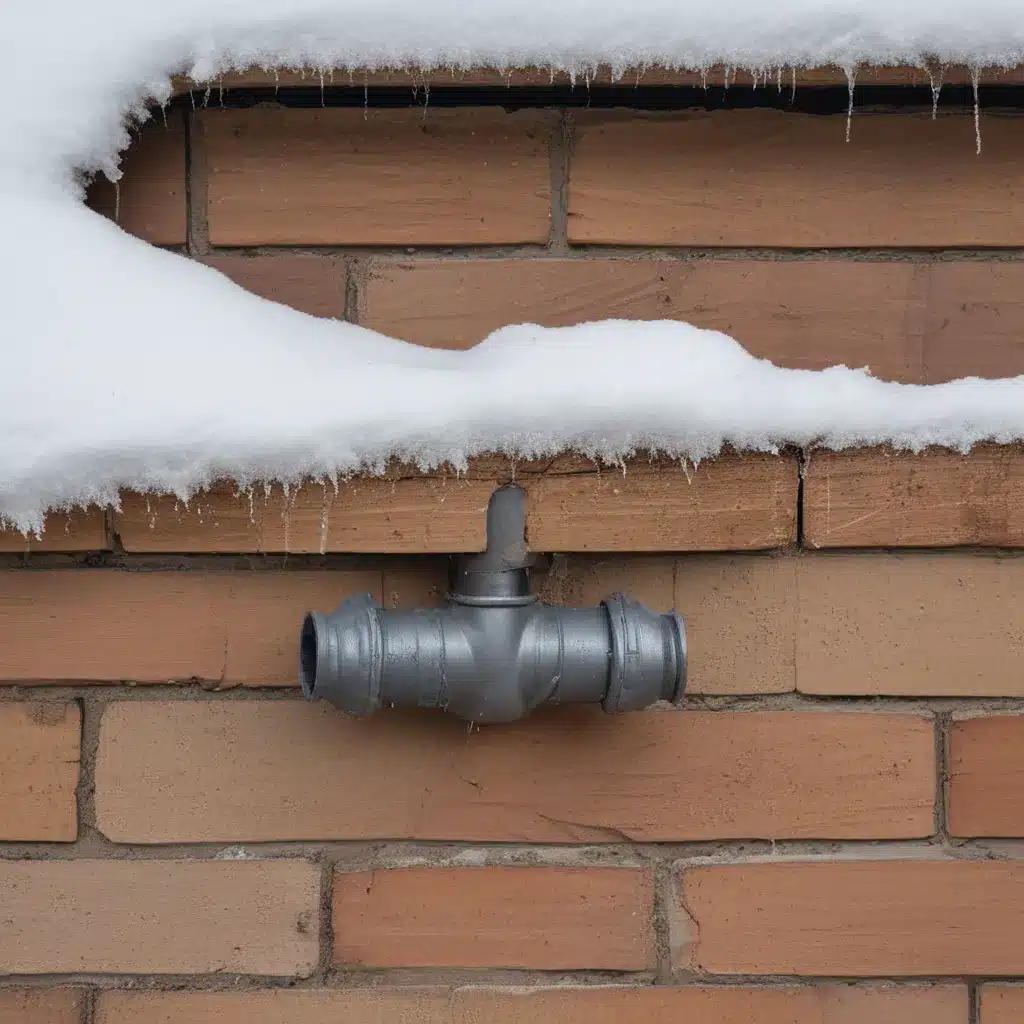
The Arctic Invasion: Keeping Your Home’s Plumbing Alive and Kicking
It’s that time of year again, folks. The temperatures are plummeting, the wind is howling, and the odds of your pipes freezing up tighter than a drum are higher than a giraffe on stilts. As the proud owner of ABC Home & Renovations in Aberdeen, I’ve seen my fair share of pipe-related nightmares. But fear not, my fellow Aberdonians – I’m here to share my top tips and tricks to keep your home’s plumbing system from becoming a frozen tundra.
Pipe Protection 101: Insulation and Circulation
Let’s start with the basics, shall we? According to the fine folks over at ProtectYourPipes.org, the first line of defense against frozen pipes is keeping the temperature in your home above 55 degrees Fahrenheit. Yes, I know, your wallet is screaming at the thought of keeping your thermostat that high, but trust me, it’s a small price to pay compared to the thousands you’ll shell out for burst pipe repairs.
But that’s not all! You’ll also want to make sure you’re dripping water from the faucet furthest from your main water valve. Why, you ask? Well, my friends, moving water is less likely to freeze than stagnant water. It’s like trying to freeze a raging river versus a still pond – the constant motion helps prevent those pesky ice crystals from forming.
And let’s not forget about insulation. Wrapping those exposed pipes in your attic, basement, and exterior walls with some good ol’ foam or fiberglass can make a world of difference. Consumer Reports suggests that pipe insulation can cost as little as 50 cents per linear foot, a small investment compared to the headache of burst pipes and water damage.
The Frozen Pipe Dilemma: Thawing and Preventing Disasters
Now, let’s say the unthinkable has happened, and you turn on the faucet only to be greeted by a measly trickle. Yep, you’ve got a frozen pipe on your hands. Don’t panic! There are a few steps you can take to get that water flowing again.
First and foremost, locate the frozen section of the pipe. According to the American Red Cross, you’ll want to check all other faucets in your home to see if you have any additional frozen pipes. If one pipe freezes, chances are others might have as well.
Once you’ve identified the culprit, it’s time to start thawing. Resist the urge to use a blowtorch or any open flame – that’s a surefire way to end up with a burst pipe and a potential fire hazard. Instead, grab that trusty hair dryer, an electric heating pad, or a portable space heater (just make sure to keep it away from any flammable materials). Slowly apply heat to the frozen section, and keep an eye on that faucet – as the ice starts to melt, you’ll want the water to be able to flow through.
And remember, if you’re ever unsure or the frozen area is inaccessible, don’t hesitate to call in a licensed plumber. They’ve got the expertise and tools to handle even the toughest frozen pipe situations.
Preventing Future Freeze-Outs: Winterizing Your Home
Alright, now that we’ve tackled the immediate crisis, let’s talk about how to prevent this from happening again in the future. According to the good folks over at State Farm, there are a few key steps you can take to winterize your home and keep those pipes toasty warm.
First and foremost, let’s tackle those drafts. Seal up any cracks and openings around windows, doors, and even your home’s foundation. This will help keep the cold air out and the warm air in, making it easier to maintain a comfortable temperature throughout your house.
Next up, don’t forget about those exposed pipes in the garage, attic, or crawl space. Make sure to insulate them properly with the help of some foam or fiberglass wrap. And while you’re at it, don’t forget to disconnect and drain any outdoor hoses or sprinkler systems. Leaving water in those lines is a surefire way to end up with a burst pipe disaster.
Finally, if you’re going to be away during the colder months, make sure to keep that thermostat set to at least 55 degrees. Sure, it might cost you a few extra quid on your heating bill, but it’s a small price to pay to prevent your pipes from becoming icy popsicles while you’re gone.
Pipe Protection: The Key to a Cozy, Worry-Free Winter
Well, there you have it, folks – your comprehensive guide to keeping your home’s plumbing system from becoming a frozen tundra. From insulating those exposed pipes to thawing out any stubborn ice blockages, you’re now equipped with the knowledge and tools to weather the Arctic invasion and keep your water flowing all winter long.
So, the next time the temperatures start to plummet, don’t panic – just remember the tried and true advice from the experts, and your pipes will be as snug as a bug in a rug. And who knows, maybe you’ll even have a little extra cash left over to treat yourself to a hot toddy or two. Cheers to a cozy, worry-free winter ahead!
















